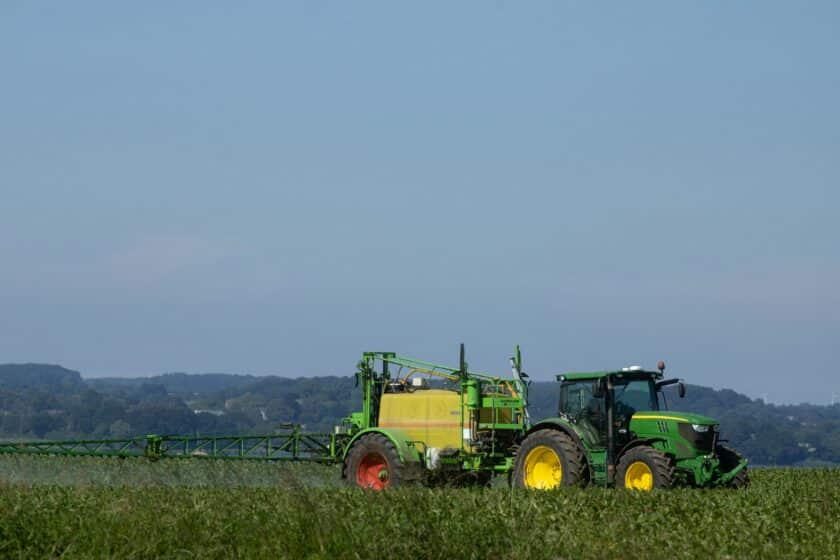Ann Meoni, senior sustainability analyst, abrdn, looks at the continued use of chemical pesticides in agriculture, what the alternatives are and where the investment risks and sustainable investment opportunities lie in the market.
The use of pesticides in food production is never far away from headlines in all forms of media from newspapers to Tik Tok. Articles and videos extolling the dangers that pesticides pose to our health are undoubtedly influencing the rise in global sales of organic food. And food producers are trying to balance demand for affordable food in a cost-of-living crisis with increasing pressure to adapt more sustainable practices.
According to the World Economic Forum, up to 40% of crop production is currently lost to pests. In a world where demand for food for a growing population is on the rise, it’s easy to see why the use of synthetic pesticides has been increasing despite the potential damage effect on human and environmental health.
Policies aimed at reducing high-impact pesticides – those considered to be a high danger to human health and the environment – have had limited success. Non governmental organisations (NGO’s) and scientists have been calling out lobbying and agri-chem funded research as an industry attempt to maintain sales despite the issues.
Centre stage is the widely used herbicide Glyphosate. Opinions are split on whether it’s linked to cancer, endocrine disruption, and birth defects. Recently several NGO’s launched legal challenges against the EU for authorising continued Glyphosate use.
But there are other headwinds for the industry. Major food companies are setting targets on sourcing from regenerative farming and the continued growth of the organic food market could reduce the use of high-impact pesticides too.
Investment risks
Beyond the possible health risks, what are the investment risks? Pests are showing increasing resistance and weeds are showing adaptation to key pesticide products, therefore potentially lessening product demand. New product development and authorisation is key for many of the big players to maintain market share.
While many proposed regulations have been watered down, bans of certain products in specific regions, especially for high-impact pesticides happen. Syngenta’s Thiamethoxam for example, was banned in the EU due to its toxicity to bee’s. The focus is on high-impact products, with the EU even stating an ambition to increase use of low-impact pesticides, which commonly means biopesticides – more on those later.
Customer and consumer preference is driving the rise in the organic food market, where many synthetic pesticides can’t be used. Big food names such as Nestlé, PepsiCo, Unilever and Danone have set targets for sourcing from regenerative farming, which should require less pesticide use.
Investment opportunities
So what are the investment opportunities? The answer here lies in farming technology and the increasing use of biopesticides.
Take Precision Farming for example, which uses technology to make pesticide application more targeted, minimising use and the potential negative impact. The number of farmers able to adopt this technique is limited to the larger producers as they have the scale to make the technology cost-effective. Investment in manufacturers of farming machinery such as John Deere or AGCO, which owns Massey Ferguson, could help provide smaller producers access to this technology and machinery.
Biopesticides are considered by some to be more sustainable than conventional chemicals, and they’re usually less toxic than conventional pesticides. Currently biopesticides are around 5% of the global pesticide market but are expected to grow at a faster rate than the overall market.
American agricultural company Corteva estimates that the biological markets, which includes fertilisers, will grow from around $9bn in 2021 to c.$30bn by 2035, meaning there’s a lot of potential here for investors. All the big players such as Syngenta, Bayer and Corteva are investing in biopesticides through R&D and M&A.
The growth trajectory for the organic food market also paves the way for companies developing biological crop protection technologies such as Bioceres, who unlike others, don’t also produce any synthetics. There’s also some really interesting innovations looking beyond pesticides, where technology can be used to prevent pest populations from growing. And let’s not forget biological controls such as using natural predators like ladybirds to tackle pests. These solutions don’t suffer from resilience issues and fit well with organic and regenerative farming systems.
The investment opportunity is clear – food producers who are effectively managing product lifetime and who are investing R&D into products less impacted by resilience and biopesticides could benefit from these headwinds.
As sustainable investors, it’s crucial that we engage with food producers to address the industry’s impact on biodiversity loss. There’s a delicate balance between protecting food production and supply for a growing population and ensuring this is done in a sustainable way.
Main image: mirko-fabian-S_7RA_uX9sU-unsplash-






























